As the seasons transition and nature awakens, a distinctive sight often captures the attention of observers—the presence of black snakes adorned with yellow stripes. These serpentine inhabitants, with their striking appearance, offer a fascinating glimpse into the diversity of snake species found across the United States. Let’s embark on a journey to explore the characteristics and habitats of these intriguing creatures in a more professional tone.
Table of Contents
Understanding the Varieties
Amidst the multitude of snake species inhabiting diverse ecosystems, black snakes with yellow stripes emerge as notable representatives. Each species possesses unique traits and adaptations that contribute to its ecological role and distribution.
Meet the Notable Species
Garter Snake
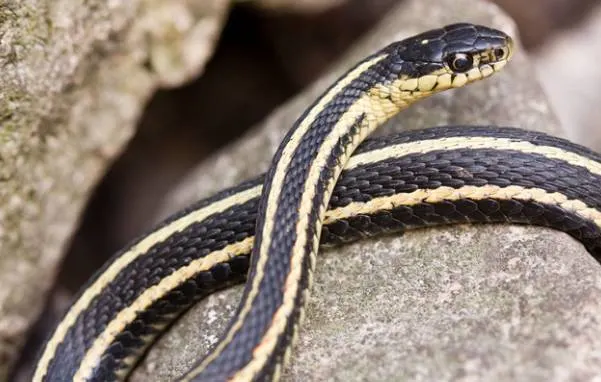
A ubiquitous presence in various habitats, distinguished by its dark body adorned with yellow lateral stripes. The garter snake, often found in backyard gardens and wetland areas, exhibits remarkable adaptability to different environmental conditions. Their diet primarily consists of small mammals, amphibians, and invertebrates, making them essential components of local ecosystems.
Orange-Striped Ribbon Snake
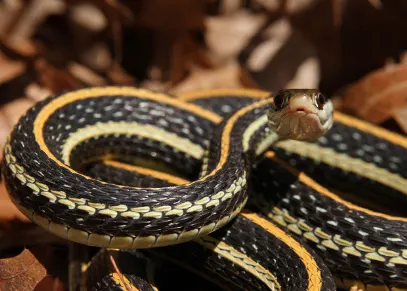
Native to marshy and riparian habitats, the orange-striped ribbon snake displays a sleek form adorned with vibrant yellow stripes. While their venom is mild and primarily used for subduing prey, encounters with humans are infrequent due to their preference for secluded water bodies. Their diet primarily comprises small amphibians, fish, and invertebrates, reflecting their ecological niche as semi-aquatic hunters.
Striped Racers
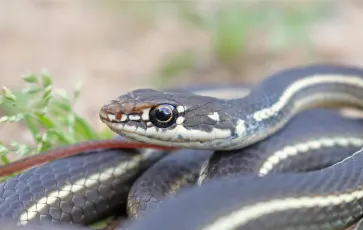
Endemic to western regions of the United States, striped racers are known for their agile movements and distinctive black or grey bodies adorned with lateral yellow or white stripes. These non-venomous snakes play a vital role in controlling populations of small vertebrates and invertebrates, contributing to the ecological balance of their habitats. Their diet includes frogs, lizards, rodents, and insects, reflecting their opportunistic feeding behavior.
Common/California Kingsnake
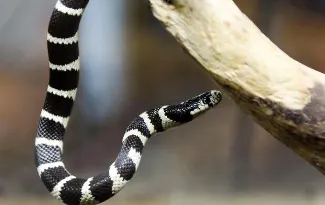
Widely distributed across diverse habitats, common and California kingsnakes exhibit glossy black bodies accentuated by bands of yellow or white. Renowned for their ability to consume venomous snakes, these constrictors play a crucial role in regulating predator populations. Their diet encompasses a wide range of prey, including rodents, birds, reptiles, and amphibians, reflecting their status as apex predators in their respective ecosystems.
Ringneck Snake
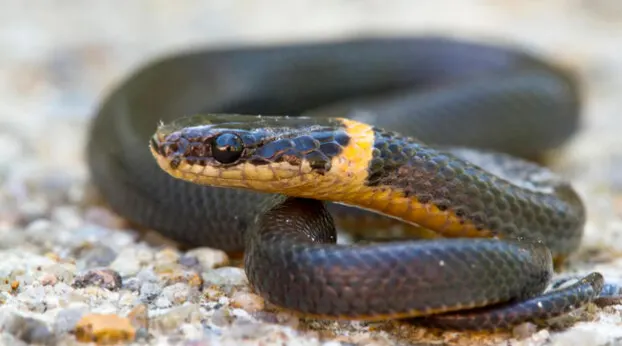
Preferring wooded environments with ample ground cover, ringneck snakes display cryptic coloration with dark bodies and vibrant underbellies. Their distinctive ring around the neck serves as a warning signal to potential predators, deterring them from engaging in confrontations. Despite their diminutive size, these nocturnal hunters play a significant role in controlling populations of small vertebrates and invertebrates, contributing to the ecological balance of their habitats.
Gulf Saltmarsh Snake
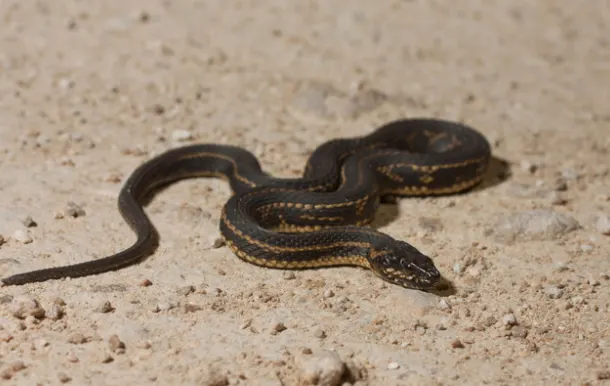
Endemic to coastal marshes and estuarine habitats, Gulf saltmarsh snakes exhibit robust bodies adorned with longitudinal stripes. Adapted to saline environments, these non-venomous snakes play a crucial role in regulating populations of small fish, amphibians, and invertebrates. Their presence underscores the ecological significance of coastal wetlands as vital habitats for diverse wildlife species.
Patch-Nosed Snake
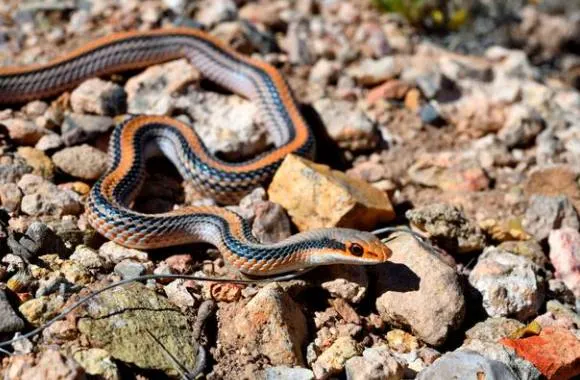
Thriving in arid and semi-arid regions, patch-nosed snakes display cryptic coloration with light tan to black bodies and distinctive stripes along their spines. Their elongated snouts facilitate burrowing behavior, allowing them to access subterranean prey such as lizards, rodents, and insects. Despite their venomous nature, these snakes pose minimal risk to humans and are primarily beneficial as pest controllers in desert ecosystems.
Coral Snake
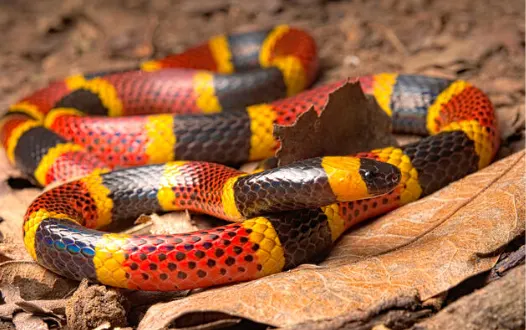
Notable for their vibrant coloration and potent venom, coral snakes inhabit a variety of habitats ranging from forests to grasslands. Their distinctive black, yellow, and red bands serve as aposematic signals, warning potential predators of their toxic nature. Encounters with coral snakes should be approached with caution, as their venom can cause severe neurological symptoms and, in some cases, prove fatal. Despite their dangerous reputation, these snakes play a crucial role in controlling populations of small vertebrates and invertebrates, contributing to the ecological balance of their habitats.
Yellow-Bellied Sea Snake
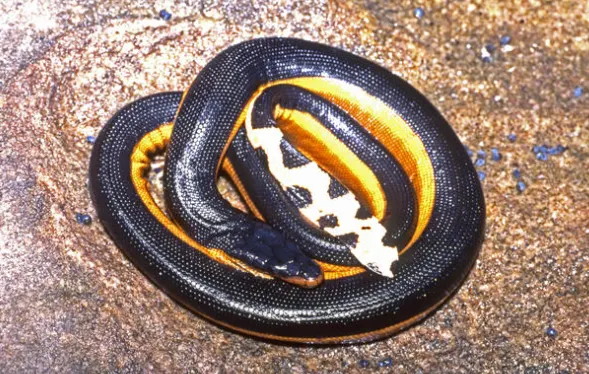
Among the few truly marine snake species, yellow-bellied sea snakes are adapted to a life spent entirely at sea. Their streamlined bodies and vibrant coloration facilitate efficient swimming and camouflage in oceanic environments. Despite their venomous nature, encounters with humans are rare due to their pelagic lifestyle. Their diet primarily consists of small fish, cephalopods, and crustaceans, reflecting their role as apex predators in marine
Appreciating Nature’s Complexity
In conclusion, the presence of black snakes with yellow stripes serves as a testament to the intricate interplay of biological diversity and ecological dynamics. By appreciating the unique characteristics and habitats of these fascinating creatures, we gain a deeper understanding of the complexities of the natural world and the importance of conservation efforts to preserve biodiversity.
- Enchi Ball Python: A Unique and Stunning Morph of Python regius - March 27, 2025
- Emerald Tree Monitor: The Enigmatic Green Guardian of the Rainforest - March 26, 2025
- The Egyptian Cobra (Naja haje): A Fascinating Serpent - March 25, 2025
